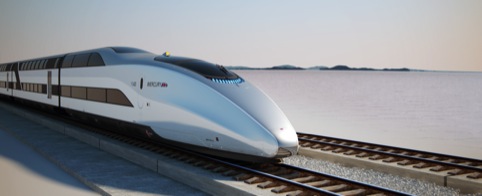Chinese takeout
Guest blogger Paul Priestman of Priestman Goode shares his experiences of China – and the Prime Minister’s recent trade delegation in particular.

Two weeks ago I stood in a line in the Great Hall of the People in Beijing waiting to be marshalled for an official photograph with David Cameron and Prime Minister Wen Jiabao as part of the PM’s trade delegation to China. As I stood there, representing the smallest company on the delegation, alongside the chief executives from some of Britain’s largest companies including Rolls Royce, Shell, Alliance Boots and Tesco, I had a chance to reflect on how important it was that the UK’s design industry was included in such a high profile international trade event and what I had learned in the two years since we’ve been working there.
Unlike many of the companies on the delegation, we have good experience of working in China and it’s been an interesting ride. Entering the Chinese market is a long-term project, a process of relationship building and cultural understanding and it’s crucial to be sensitive to the cultural differences between our countries. Forming relationships on a personal level before you become business associates is essential. Expecting to win business overnight is unrealistic – business wins aren’t built on reputation and recommendations alone, but from spending time to get to know your clients and understanding their culture and their processes.
This cultural understanding is hugely demanding, but can also prove incredibly rewarding and inspiring. Symbolism is still a crucial part of the Chinese cultural and creative industries, which throws up a whole host of seemingly competing demands for new design. One of our clients, Sifang – the country’s largest rolling stock manufacturer – demands that our new Chinese high-speed train designs represent both a global Chinese creative icon, speaking to the world about the advance of Chinese design and technology, but also represent each regional line distinctly from the others – a matter of mass production appearing local.
The Chinese also work creatively through very different design and development processes and I know we can learn a lot from them. I do wonder sometimes whether the Western approach of developing new products and services in a linear ‘A to B’ process is necessarily the right approach.

Our experience of the Chinese development process is that they operate a much more multi-track approach, developing many solutions simultaneously and picking the best option once they are quite far developed. This approach often results in a speedier resolution to the development process and often a better product or service in the end. We are looking at how a combination of this and our more Western approach could benefit the design process.
The purpose of the trade delegation was to foster a greater cooperation between Chinese and British business. For me, this is much more than just making contacts, selling our services and fretting that the burgeoning Chinese creative services sector could put us all out of work. It’s about developing understanding between two very different creative cultures and working out how a closer co-operation between these two very different approaches can benefit both parties.
-
Post a comment



